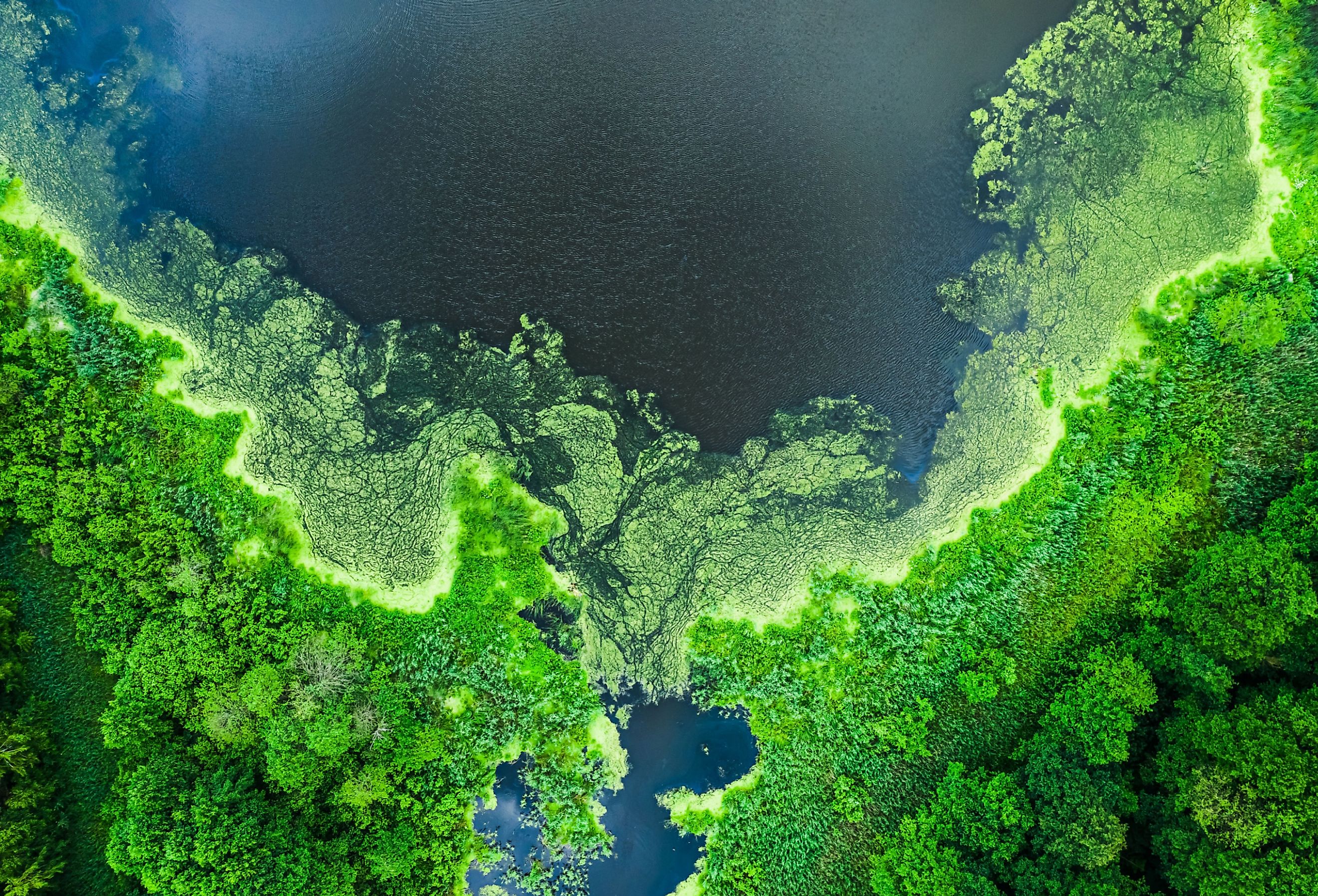
Study Reveals Why Coastal Algae Blooms Now Cover Over 8.6% of Total Ocean Surface Area
Humanity has always been capable of creating large-scale environmental changes; sometimes, planting forests, and other times razing them. Following the intensification of industrial activities in the 20th century, the unstoppable ability to exploit and alter the Earth has resulted in unforeseen (and foreseen) consequences. Algae blooms are one of those realities. The agricultural revolution happened about 10,000 years ago, but advances like fertilizer have only become dangerously out of control within the last 100 years. Excess greenhouse gasses, ammonium nitrate explosions (that saw the obliteration of a port in Beirut in 2020), and now eutrophication are the outcomes of global systematic neglect of fertilizer regulation. To comprehend why algae blooms covering 8.6% of the Ocean's surface is concerning, one must first understand what algae blooms are, and second, the imminent danger.
What are Algae Blooms?
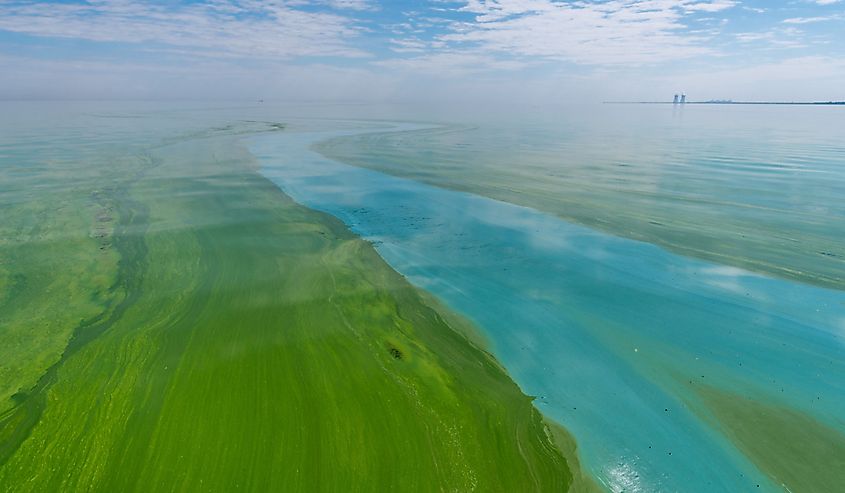
Algae blooms are rapid increases in the population of algae, typically microscopic plant-like organisms, in an aquatic system. They can occur in freshwaters, such as lakes, rivers, and ponds, as well as in marine environments, like oceans and seas. Algae blooms are a natural phenomenon, but they can also be due to human activities. These events are characterized by the sudden appearance of dense layers of algae on the water's surface or throughout the water column, often altering the water's color and appearance.
There are two main types of algae blooms: harmful and non-harmful. Non-harmful blooms are generally benign and may even contribute positively to the ecosystem by providing food for aquatic organisms. However, harmful algae blooms (HABs) can pose significant risks to human health, aquatic ecosystems, and the economy.
The primary cause of algae blooms is an excess of nutrients, particularly nitrogen and phosphorus, in the water. These nutrients can come from various sources, including fertilizer runoff from agricultural lands, untreated sewage, and atmospheric deposition. When nutrient levels are high, and environmental conditions are favorable, such as warm temperatures and ample sunlight, algae can grow and reproduce rapidly, leading to a bloom.
Why are Algae Blooms Dangerous?
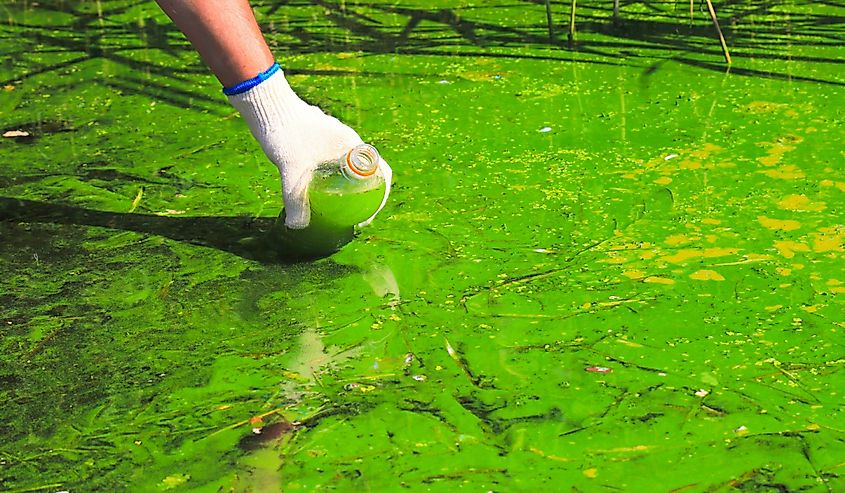
Algae blooms can produce various toxins depending on the type of algae and the surrounding environmental conditions. Cyanobacteria, also known as blue-green algae, can produce a variety of toxins, including microcystins, anatoxins, cylindrospermopsin, and saxitoxin. Dinoflagellates, on the other hand, can generate toxins such as brevetoxins, ciguatoxins, and saxitoxins. Diatoms can produce domoic acid, a neurotoxin that can cause amnesic shellfish poisoning, while Prymnesium parvum can generate prymnesin, a toxin that causes harm to aquatic life, including fish. These toxins can have severe consequences on human and animal health, as well as on the environment. Ingestion or exposure to these toxins can result in symptoms such as nausea, vomiting, diarrhea, skin rashes, and, in some cases, even death.
Moreover, these toxins can accumulate in the food chain, leading to health risks for humans who consume contaminated seafood. Direct contact with toxic algae or inhaling aerosolized toxins can cause skin irritation, respiratory issues, and other health problems.
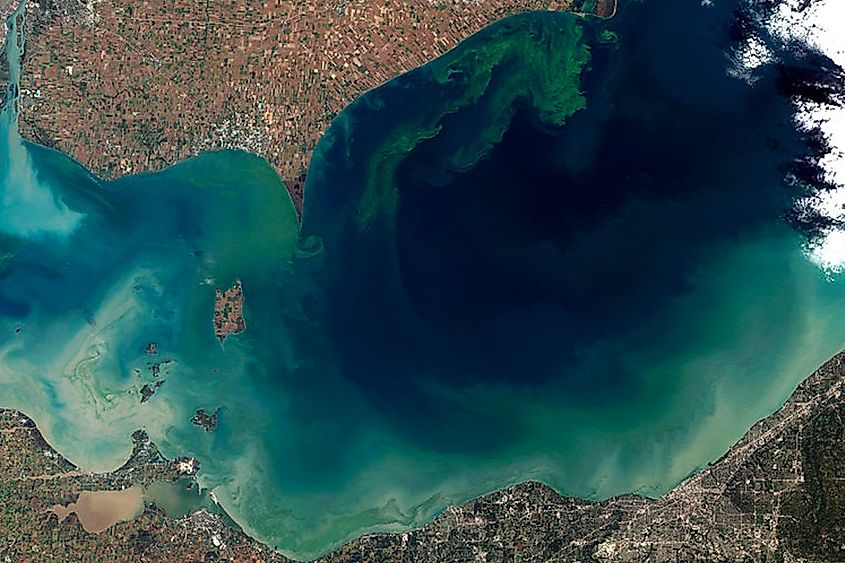
HABs can also lead to oxygen depletion in the water, a process known as eutrophication. When large quantities of algae die and decompose, the process consumes dissolved oxygen in the water, leading to hypoxic or anoxic conditions. This oxygen depletion can cause massive fish kills and create dead zones, where most aquatic life cannot survive. Such events can have severe ecological and economic consequences, particularly for fisheries and coastal communities that depend on healthy marine ecosystems.
A recent study published in the journal Nature, based on findings from NASA satellite data, has raised concerns about the increasing size and frequency of algae blooms worldwide. The study reported that algae blooms are getting larger, which suggests that fertilizer runoff and nutrient pollution have been increasing. As of 2020, the combined size of all ocean-based algae blooms covered 31.47 million km2 (12 million square miles) approximately 8.6% of the total ocean surface area. Furthermore, the growth rate of global algae blooms increased by 59.2% between 2003 and 2020.
Impacts on Coastal Communities and Economies
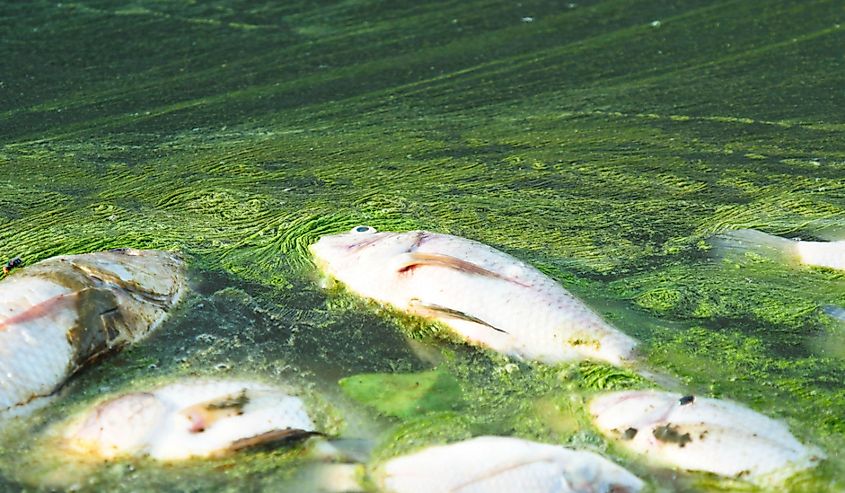
The consequences of algae blooms are diverse, ranging from declines in tourism to disruptions in local fisheries. When HABs occur, they often lead to beach closures due to the risks associated with direct contact with toxic algae and contaminated water. These closures can negatively affect tourism-dependent coastal towns, reducing revenue and job losses in the hospitality and service sectors.
Fisheries can also suffer severe consequences from large-scale algae blooms. Fish kills, shellfish poisoning, and reduced water quality can result in decreased productivity and financial losses for local fishermen. In some cases, harmful algae blooms have led to long-term closures of shellfish harvesting areas, significantly impacting the livelihoods of coastal communities.
Strategies for Mitigating Algae Blooms
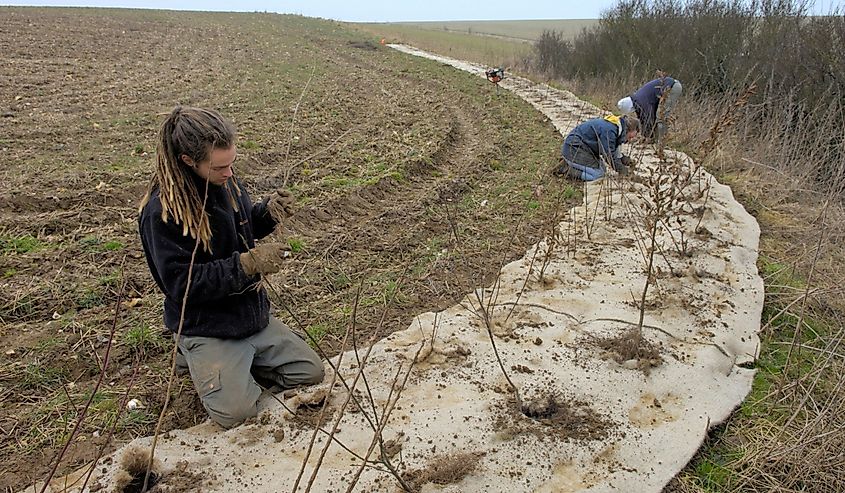
One key approach to reducing Blooms is reducing nutrient pollution by implementing best management practices in agriculture and urban areas. This can help minimize the runoff of nitrogen and phosphorus into waterways. Some practices include optimizing fertilizer application, promoting cover crops, and constructing buffer zones near water bodies. Improving wastewater treatment is another crucial step, as upgrading and maintaining wastewater treatment facilities can help reduce the release of nutrients into waterways.
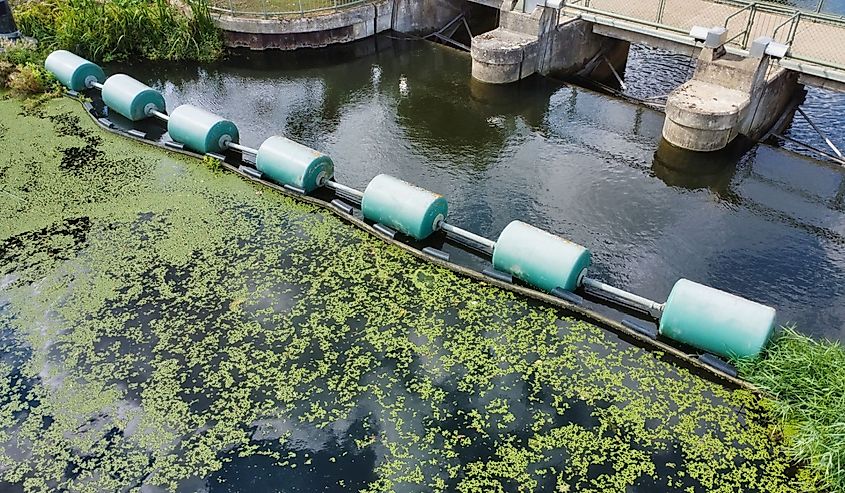
Regular monitoring of water quality and the implementation of early warning systems can help detect the onset of harmful algae blooms, allowing for a prompt response and mitigation measures. Furthermore, public education and awareness initiatives play an essential role in mitigating algae blooms. Educating the public about the causes and consequences of harmful algae blooms can encourage individuals and communities to adopt practices that minimize nutrient pollution and help protect water quality. By implementing each of these strategies, it is possible to reduce the prevalence and impacts of harmful algae blooms.
A further buildup of algae bloom will significantly impair aquatic ecosystems, human health, and the economy. As shown by the NASA satellite data, the increasing size and frequency of these blooms underscore the importance of addressing the causes of these events and developing strategies to mitigate their impacts. Thankfully, there are existing approaches to help confront this issue before it snowballs into a crisis. However, many of these solutions require wide-scale awareness and global engagement to address the issue effectively, which is achievable, albeit daunting.











